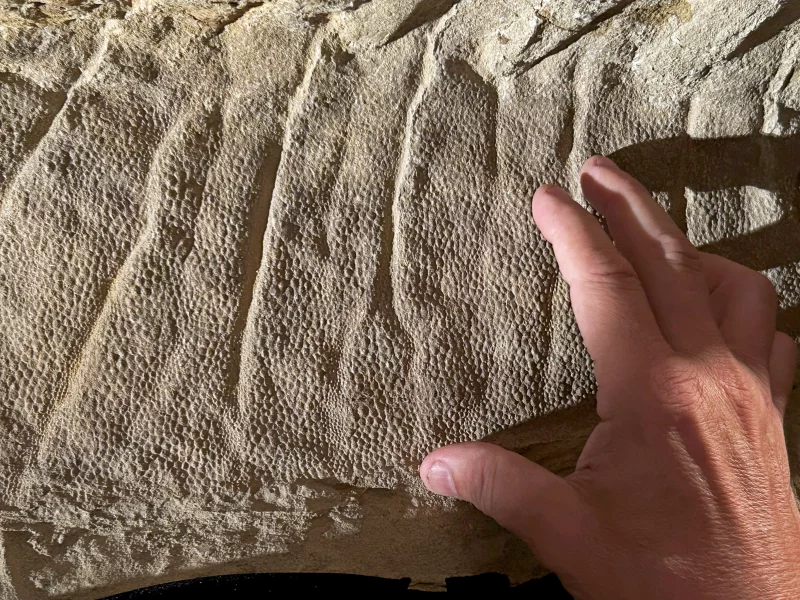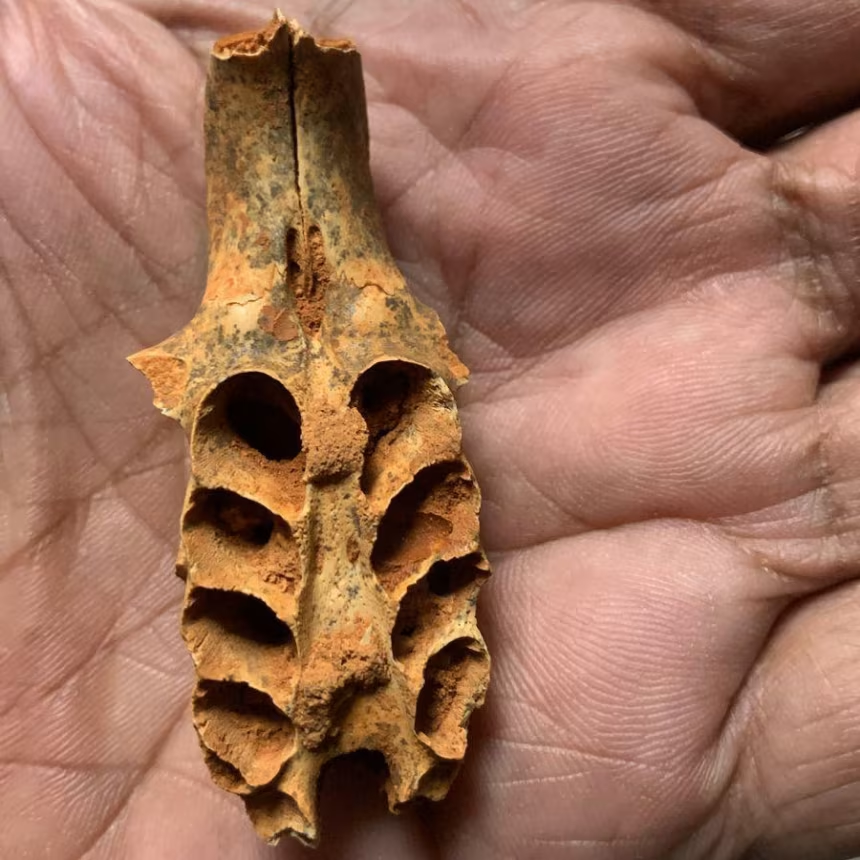Edmontosaurus annectens Reveals Astonishing Anatomy in Two Exceptionally Preserved Specimens
In a landmark discovery, paleontologists have unveiled two exquisitely preserved specimens of Edmontosaurus annectens ― a duck‑billed herbivore from the Late Cretaceous period ― that provide the most complete view yet of this dinosaur’s external anatomy. These fossilized “mummies,” discovered in the badlands of Wyoming, include preserved features such as skin texture, a mid‐body crest, tail spikes and, most surprisingly, hoof‐like structures on the hind feet.
What Was Found
- The two specimens include a late‑juvenile (“Ed Jr.”) and an early‐adult (“Ed Sr.”) individual, both about 66 million years old.
- The adult shows a hind foot where the three main toes are capped with a keratinous sheath forming a hoof‐like tip — the first confirmed instance of a hoof in a non‑mammalian land vertebrate.
- Long, pebble‑sized scales cover most of the body, with a row of larger spine‑like projections running down the tail. A fleshy crest rises along the neck and mid‑trunk, transitioning into the spike row.
- Preservation methods included a “clay‑mask” layer no more than 0.25 mm thick, which captured the exact outline of the carcass in three dimensions before it fossilized.
Why It’s Groundbreaking
- First hooves in a dinosaur: The hoof‑like coverings demonstrate this species was adapted for firm terrestrial footing, not just swamp or floodplain environments.
- Better anatomical fidelity: Most dinosaur fossils yield bones only; these mummies give skin, soft‑tissue outlines and indicate limb posture and locomotion more accurately.
- Insights into movement and behaviour: The combination of hooves, body crest, tail spikes and limb posture suggest Edmontosaurus may have moved on all fours when leisurely, but shifted to bipedal posture (hind legs) when running ― making it functionally convergent in some ways to modern animals like kangaroos.
- Taphonomy revealed: The exceptional preservation shows a scenario where carcasses dried partially in the open, then were quickly buried by a sudden flood of sediment. This “mummy zone” process tells scientists how other soft‑tissue dinosaur fossils might form.
What We Learn About Edmontosaurus
- This species, long known from bones and skeletons, now shows a complex external appearance: crested neck, spine spikes, hoof‑equipped toes, and finely scaled skin.
- The hoofed toes indicate firm ground adaptation—so instead of soft, marshy terrain only, these dinosaurs were built for more varied ground.
- The tail‑spike row may have served display, defense or social signalling functions; previously this feature had been only partially inferred from fossilized vertebrae.
- The “mummification” process suggests that under particular environmental conditions — exposed carcass drying, microbial clay templating, rapid burial — high‑fidelity preservation is possible, meaning more such finds may await.
The Big Picture
This discovery is more than just another fossil. It shifts our understanding of how dinosaurs looked, moved and adapted. By capturing skin and minor features, these mummies blur the line between skeleton and living creature, fueling more lifelike reconstructions and better biomechanical modelling. For paleontology, they underline that “bones only” no longer have to be the default.
Furthermore, the finding illustrates how specialized environments (the so‑called “mummy zones”) may be far more common than previously thought. With refined search techniques and awareness of preservation pathways, paleontologists may locate more of these detailed fossils, unlocking further mysteries of the dinosaur world.















Leave a Reply